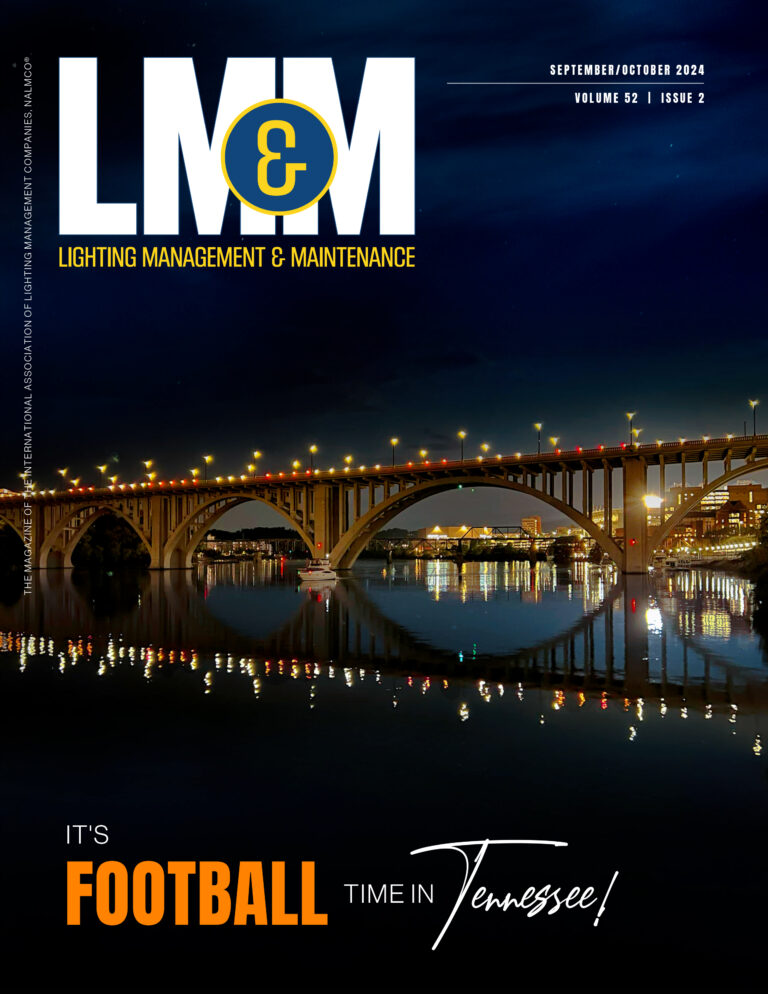Silver Spring, MD – Using new and updated data sources, the U.S. Department of Energy (DOE) is now predicting that light-emitting diode (LED) lighting will achieve an 84% general-lighting-market penetration by 2030, substantially more than the 74% penetration DOE predicted just last year. The newest report – Energy Savings Forecast of Solid-State Lighting in General Illumination Applications – is available free from the National Lighting Bureau (www.nlb.org).
DOE estimates that, in 2013, LED-lighting sales comprised an overall 3% market share. By 2020, it believes, LED sales will comprise almost half (48%) of all U.S. general-lighting-market sales. By 2030, DOE believes, LEDs will dominate in each of the eight submarkets it examined, five indoor and three outdoor:
INDOOR LIGHTING
- General-Service Submarket
- Decorative-Lamp Submarket
- Directional Submarket
- Linear-Fixture Submarket
- Low-/High-Bay Submarket
OUTDOOR LIGHTING SUBMARKETS
- Street/Roadway Submarket
- Parking Submarket
- Building-Exterior Submarket
DOE predicts that LED use will grow most rapidly in the street/roadway and general-service lighting submarkets. In the street/roadway submarket, DOE is projecting an 83% LED market share by 2020 and an almost 100% share by 2030. LED penetration of the general-service submarket will proceed less rapidly, DOE says, suggesting a 55% market share by 2020. LEDs’ market penetration should accelerate after that date, however, and is expected to also achieve a near-100% submarket penetration by 2030.
DOE reports that, in 2013, lighting was responsible for about 17% of the nation’s total electricity consumption. Greater reliance on LEDs should reduce U.S. lighting-energy consumption by 15% in 2020 and by 40% in 2030, saving about $26 billion at today’s electricity prices.
According to National Lighting Bureau Chair Howard P. Lewis (Viscor Group of Companies), who represents the Illuminating Engineering Society (IES) on the Bureau’s board, “I’m confident that these are the best predictions available on this subject, but – like all predictions – they cannot consider the unknown. One of the biggest unknowns is ‘What will the lighting industry come up with next?’ Between now and 16 years from now, it’s highly likely that we’ll be dealing with ‘the next big thing.’ And we also have to remember that manufacturers of alternative light sources have made huge strides in improving their products’ efficiency and longevity, especially in the area of fluorescent lighting. This means that more products and more types of products will be competing on the basis of efficiency, cost, and functionality, and that’s a good thing.”
Established in 1976, the National Lighting Bureau is an independent, IRS-recognized not-for-profit, educational foundation that has served as a trusted lighting-information source since 1976. The Bureau’s services are made possible by the generous funding of its sponsors; professional societies, trade associations, manufacturers, and agencies of the U.S. government, including, among others:
- GE Lighting;
- Illuminating Engineering Society of North America (IES);
- Imperial Lighting Maintenance Company;
- interNational Association of Lighting Management Companies (NALMCO);
- International Landscape Lighting Institute;
- Jan & Brooke Luminae, LLC
- Lighting Controls Association;
- LumenOptix;
- Lutron Electronics Company, Inc.;
- Magnaray;
- National Electrical Contractors Association (NECA);
- National Electrical Manufacturers Association (NEMA);
- OSRAM SYLVANIA;
- U.S. General Services Administration; and
- Viscor Group of Companies.
Obtain more information about the Bureau by visiting https://www.nlb.org or by contacting its staff at [email protected] or 301/587-9572.



